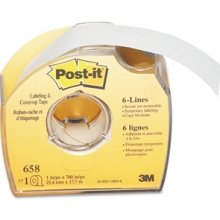 |
| Dr. House - "Everybody Lies" |
One of the many compicated things about being a knitter is that no two expert knitters seem to give the same advice on anything. They don't agree on what material needles you should use, what shape of cable needles are best, what fibers are best (acrylic, anyone?), circs or straights - what's a knitter to do?
"Imperfections are how you know it was handmade!" Has anyone ever fed you this line of #*>&? I'm pretty sure artists from Rembrandt to Nicky Epstein have never subscribed to this theory. "There is no one right way." I love this line too, because it completely ignores the fact that there are
thousands of wrong ways. You can make a row of knitting that looks okay to you, but is, in fact, wrong, and going to screw up the row above or below it. There is, sometimes, one right way.
But my all-time favorite bit of knitting "wisdom" is "I never swatch. Swatches LIE!" My response is, "Not if you raise them right."
Like an errant child, misbehaving swatches need to be corrected. Why do we swatch? To learn specific details about how our garment is going to look, brush up on techniques, discover how much yarn we'll need, and so much more.
Here's how to make a swatch that works:
1. Use the same yarn on the same needles. If you're going to knit your project with Cascade 220 on US 6 addi Turbos, don't swatch on US 6 bamboo straights. It
does matter. Every needle has a different finish, which affects the size of each stitch. Remember, across 25 stitches a difference in guage seems small. Across 150 stitches, and 100 rows, any difference magnifies to several inches too small or too large.
2. Row gauge matters most of the time, so make sure you get it right. Yes, it does. I don't care what you've heard. If you have the correct stitch gauge and the incorrect row gauge, change needle surfaces. In general, bamboo will give you the shortest stitches, and nickel will give you the tallest. If your stitches are short, switch to needles that are slipperier. If they're tall, choose something stickier, like plastic or bamboo.
3. If you're going to knit in the round, swatch in the round. Yes, really. Everyone purls more tightly than they knit, and knitting in the round tends to create slightly taller stitches. You'll still need to make a swatch that's 4-6 inches wide, meaning it will be 8-12 inches in total circumference. Yes, it takes longer. The round one will be accurate. The flat one won't. Make the round one.
4. Swatch until you achieve a fabric you like. If you don't like it when it's 6 inches square, you won't like it when it's a full garment. If you hate it small, substitute yarns until you find one you like, and make a fabric you'll love to wear. Remember, no matter how good the picture looks, you'll be wearing this, not the model. If you can't achieve a fabric you love with the pattern instructions, that's not the pattern for you.
5. Read the whole pattern, and swatch each part. I know, maybe the instructions told you to swatch over stockinette only. Groovy. I've never known two people to knit lace or cables or pretty much any significant stitch pattern in the same gauge as their stockinette. The pattern author doesn't have to wear the garment. You do. Swatch the design elements. You'll do a better job with them in your garment, and your garment will more likely fit.
6. If you're knitting in colorwork, swatch in colorwork. Yep. I know. But there isn't really any point in arguing with me. Not only am I unable to hear you, I'm right. Most people have a very different gauge in colorwork. Just do it.
7. Once you've achieved a swatch you like, launder it according to the instructions on the ball band, and block it. Very small differences in gauge can easily be corrected in the blocking phase. In particular, design elements (stuff that isn't plain stockinette) rarely lay properly until they're blocked anyway. And this is the time you'll find out if your colors run. Nothing ruins a great colorwork project like one color running all over another. If your swatch doesn't launder well, seriously consider starting over in a different yarn.
This is how to make a swatch that doesn't lie. If you make a swatch and break any of the above rules, don't complain about the finished product. You've been warned.


 Indeed, my colorwork loving friends, I haven't forgotten you. These Elaborate Norwegian Star Slippers, published in Knitting Scandinavian Slippers and Socks, are a colorwork lover's delight, and they are stunning. You'll have to buy the book or hit the library to get the pattern, but if you're hooked on socks or slippers, you'll be thrilled to flip the pages and find new favorites.
Indeed, my colorwork loving friends, I haven't forgotten you. These Elaborate Norwegian Star Slippers, published in Knitting Scandinavian Slippers and Socks, are a colorwork lover's delight, and they are stunning. You'll have to buy the book or hit the library to get the pattern, but if you're hooked on socks or slippers, you'll be thrilled to flip the pages and find new favorites.














